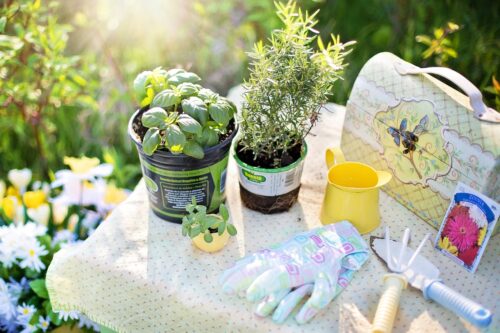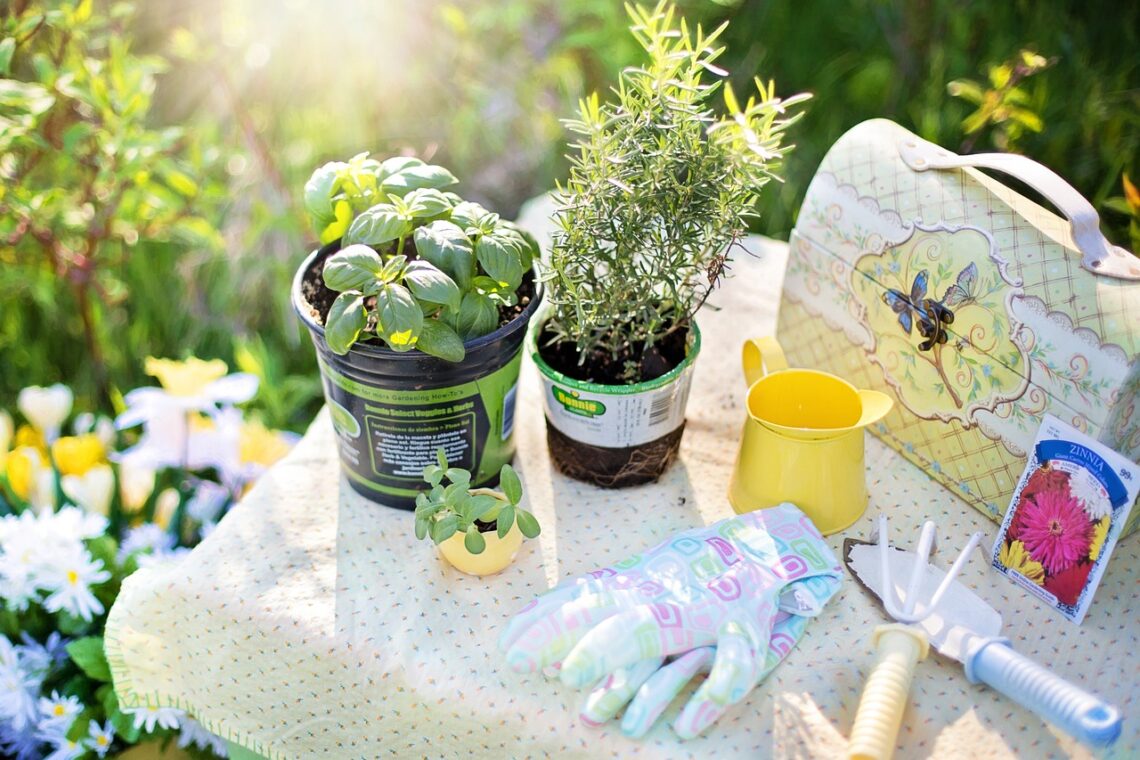Winter is here and if you are thinking about preparing your yard, then follow our guide to know What to Do in the Garden in January!
Gardeners can do many things in the garden, even in the winter. Whether it is planting cool-season plants or cleaning the yard, we have made a list of some helpful winter gardening tips to help you utilize your time properly. Let’s look at What to Do in the Garden in January!
What to Do in the Garden in January

1. Mulch
Check for frost around the base of outdoor plants and work in an additional layer of mulch as and when required. It keeps the ground frozen by protecting it from the sun’s warmth. A steady temperature aims to keep the plant in a dormant stage and stops it from triggering any new development. Such fresh growth in winter usually dies back.
2. Sowing Early Seeds
You can use January to sow some seeds, which could still be problematic. First, if you grow the seeds early in the year, you may need to provide a space for the young plants to develop nicely in the early phase, as it may be cold outside.
Be prepared to have some space to grow the young plants for a few months indoors or under glass to save them from any damage until the frost is over.
3. Taking Care of the Birds
January looks like a very dull and quiet month for the birds and bees in the garden. It is frosty and too cold for them, so it can be an excellent period to take care of the birds. The birdbaths usually stay frozen, depriving the birds of a significant water source at this time of the year. Berries can feed them, but typically, the birds finish munching on them by now. So, it is essential to keep the bird feeder filled with nutritious food to keep the birds well-fed during the winter months.
4. Time to clean
January can be a perfect time to get some cleaning done. The winter and fall knock off dry leaves, branches, parts of trees, and they can add to the piling up of dead tree parts waiting for you to remove them.
It may be the best time to clear that part of the garden away. During winter, you can even choose to cut off anything that looks damaged. Shake off the snow from tree branches and leaves, too, while you are out cleaning.
5. Start chitting early potatoes
January is an excellent time to purchase seed potatoes and begin chitting the first ones. If your garden is sheltered or situated in a much milder zone, it may be possible to start chitting the potatoes early. If the garden is wet, cold, or exposed, it is best to plan the same process a few weeks later.
If you are ready to start chitting the potatoes in January, you can put them in egg boxes or paper in an excellent spot and wait for the new shoots to grow.
6. Winter Weeding
It can be an exciting thing to observe that the weeds do not die in the cold, and whenever you cut them back, new shoots begin to grow, and they keep growing. For instance, Sedum keeps growing when you cut them back. So, you can leave the equal perennials unpruned till springtime.
Weeds can continue to grow during a milder cold month, making the paths very slippery. However, you can manage to keep the borders free of weeds during the winter.
7. Check your Inventory
If you are the kind of gardener who loves to stock up on plants and bulbs before fall arrives, now can be the time to go through the supply and stores in the house. If you see any signs of rotting, it is best to eliminate the plants that look unhealthy beyond repair. Do they still look healthy enough to be used, or do they look dried up and withered?
8. Plan ahead
Now is also the right time to start planning your garden. If you have some ideas for the new year to try out in the garden, you can start making a to-do list of those activities. Map and plan the garden spaces indoors and outdoors now so you can start early or prioritize work.
Even the seed catalogs start to arrive, and you can consider your ideas when you are stuck indoors. Utilize this time to read up on the trendy flowers, trees, bushes, and herbs you may want to plant this year.
9. Lawn Care
It is essential to protect the lawns from frost and damage. It is true that when you walk on the frozen frosty grass, it causes more damage to the lawn. It destroys the grass, covers plants beyond repair, and makes the patches more prone to diseases. When you know it is difficult to make a decent-looking lawn, it may be a good idea to avoid walking on the lawn during the harsh winter months.
10. Dealing Botrytis Grey Mold
When you are over-wintering or starting new seeds in the greenhouse under the glass, mold, and mildew can cause trouble. To cut down on the risk of Botrytis, you need to increase ventilation by keeping the vents and door of the greenhouse open on better and a little warmer days in the winter. If you notice any signs of the disease, move the affected plant out of the greenhouse to stop the disease from spreading to other plants. Also, remember to cut down on the watering to a minimum, keeping plants as dry as possible throughout the winter.
11. Grow Amaryllis
Consider planting Amaryllis bulbs in containers in January for pretty indoor blooms. Other container plants like Iris, Hyacinths, and Narcissus can also be moved indoors for gorgeous and fragrant indoor displays.
12. Recycle Christmas
The live Christmas tree does not need to be thrown away but can be utilized for other things in the garden. You can keep the Christmas tree outside decorated with fruits, popcorn, candies, cranberries, and seeds that birds love to feed on. Then, it works as a live natural bird feeder.
Additionally, you can use the tree to do mulching and use it within the garden to create more nutrients.
13. Check Dahlias
You can check out your storage for some Dahlia tubers and get rid of them if they show any signs of rotting. Ensure they are kept completely dry and not exposed to frost at any time.
You can keep the rose bushed pruned even when in its dormant stage. You can cut them back right above the bud. Keep the dead branches and leaves away from the plant by cutting them off. Make sure the trellis, wires, and fences are secured and robust. If there are any loose branches, tie them up using strong twines.
14. Keep your Thumb Green
There are a few things that you can do in January to remain as active as possible and also ensure that the garden returns to life after things begin to thaw. Creating a beautiful garden takes more than just hard work. It needs careful year-round planning and staying active. You can keep tending to your plants’ needs even in the colder months. Do not let the snow and freezing temperatures keep you away from your plants.
15. Grow Fragrant Shrubs
You can also choose to grow shrubs and root trees if the weather permits. Try to plant fragrant shrubs like Daphne Odora and Sarcococca Confusa by the entry paths and doorways to relish their sweet, fresh scent.



